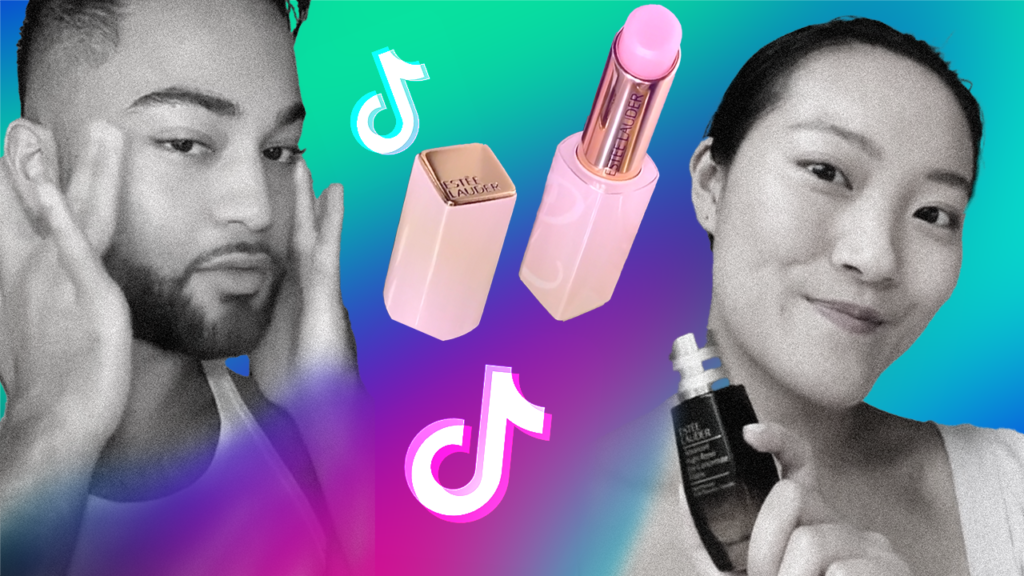Estee Lauder is a legacy brand often associated with older generations—that’s changing as the brand engages Gen Z with a TikTok-focused strategy.
TikTok was recently named Estee Lauder Account of the Year, an honor that reflects the company’s embrace of the platform as a tool to introduce the 76-year-old brand to a new generation. The platform boasts one billion monthly active users spending an average of 850 minutes daily on the app, and is beloved by Gen Z.
But Estee Lauder didn’t buy ads and hope for the best, which was vital to their success, as Gen Z loses interest in ads—even the engaging ones—after 1.3 seconds, according to a recent report.
Why Estee Lauder Chose TikTok
Gen Z is now more likely to look for products on TikTok or Instagram than Google. According to a recent survey, 72% of Gen Z consumers follow influencers on social media, and 52% trust influencers’ advice on the products and brands they should use.
Estee Lauder’s TikTok campaign was launched in 2021. The campaign collaborated with TikTok creators such as Liane Valenzuela and Mireya Rios, who have a combined following on the site of 14.8 million.
In an interview with Digiday, the social media and content manager for Estée Lauder Lubna Mohsin, stated the brand chose TikTok to reach new audiences in the highly competitive EMEA market because it gets the brand in front of a prized demographic: Gen Z.
“Whilst Instagram is key to engaging our core audiences and deepening our relationship with existing and new consumers, we wanted to push the boundaries in new ways and reach new people,” Moshin stated in the interview. “Naturally, we looked beyond what we were already doing. In TikTok, we saw a unique opportunity to recruit a new, larger audience with a younger demographic.”
TikTok’s Engagement Data Reveals Its Impact
According to Kalindi Mehta, Vice President of Consumer Foresight and Predictive Analytics, Enterprise Marketing & Data at The Estee Lauder Companies, brand marketers need to be careful to recognize foresight when looking at campaign results. What’s working now may not work in the near future – and that can be a challenge when translating insights into strategy.
“You can’t just go by data,” Mehta stated in a Forbes article. “The more rigor you put into building foresight by linking data to meaning to wider [cultural] influences, the more depth you bring to your foresight, the more likely you are to head in the right direction.”
When campaigns go well, it can lead marketers to stick with what they know, rather than looking at new options that may perform better.
“Because we get digital results so quickly, marketers become addicted,” she said. “We see immediate feedback in terms of clicks or short-term sales, so if you’re a marketer who’s nervous about spending your money, and you’re seeing that it’s working right now, you tend to keep your focus there.”
While brands may initially lean into Instagram, newcomer TikTok may actually deliver greater engagement through influencers, per an Upfluence study. While Instagram is highly effective, TikTok is a challenger that’s delivering on Gen Z engagement, said Mehta.
According to Influencer Marketing Hub, TikTok soared above other social media platforms for per post user engagement.
- Micro-influencer engagement rates: 17.96% on TikTok, 3.86% on Instagram, and 1.63% on YouTube.
- Mega-influencer engagement rates: 4.96% on TikTok, 1.21% on Instagram, and just 0.37% on YouTube.
TikTok’s popularity is predicted to continue rising among Gen Z, per Statista. And that means that legacy brands like Estee Lauder will likely continue shifting spend to the platform.
View Estee Lauder’s TikTok account here.

